Regenerative is a description of the type of grazing management and land stewardship applied to a grazing land resource to rebuild and optimize soil health. These management decisions are guided by the six soil health principles, including properly integrating livestock.
That’s why we look at cattle and how they are grazed or raised as tools of regenerative management. It’s not the cow as much as the how. With that said, we can develop a list of desirable attributes and expectations of cows which can perform successfully as reproductive females in a regenerative ranching operation.
Be aware that the type of cow that performs well at a regenerative ranch in one location may perform poorly at another location. It is also likely that different types of cows can perform equally well within the same locale under different regeneratively managed operations. It is all about the cow fitting the context of any given regenerative ranch.
Generally, a “regeneratively managed cow” is moderate or optimal – not excessive – in most traits, which helps increase profit per acre.
Six Desirable Cow Attributes for Regenerative Ranches
The following are some key attributes, considerations and expectations for cows under regenerative management.
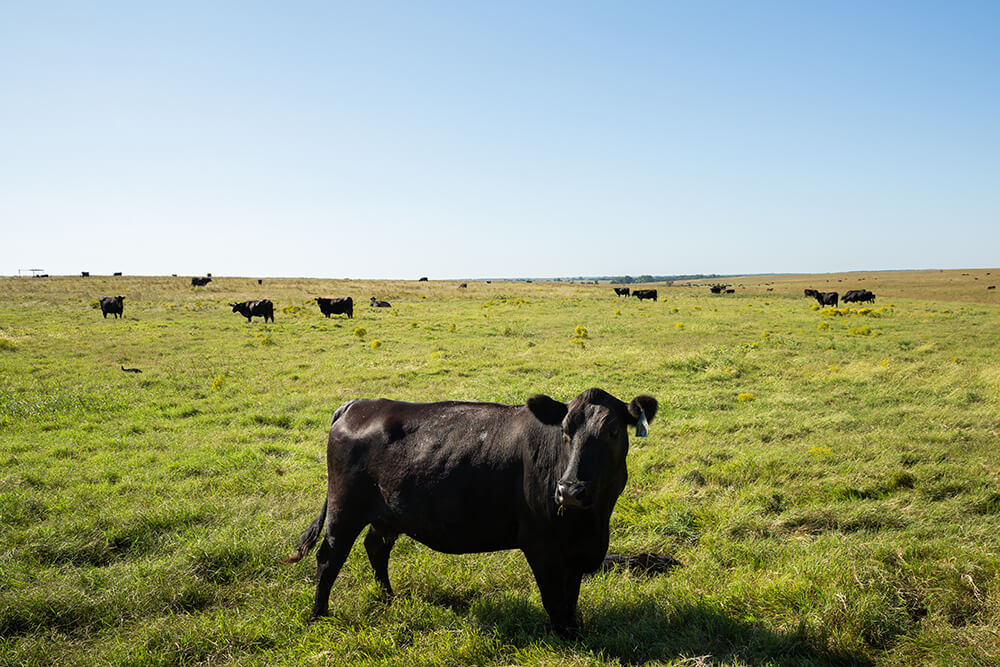
1. She fits her environment.
Cows that best fit the environment of your ranch, whether natural or management-induced, do better at maintaining body condition and rebreeding, therefore remaining in your system longer.
In regenerative management, grazing management typically includes high stock density grazing. The herd is moved frequently; pastures are grazed for short periods and allowed to recover fully before being grazed again. Look for and retain cows that easily conform to the adaptive grazing method and respond well to human stockmanship. In addition, be mindful of the need to calve and breed in alignment with peak forage production to be more synchronized with nature and to optimize grazing nutrition.
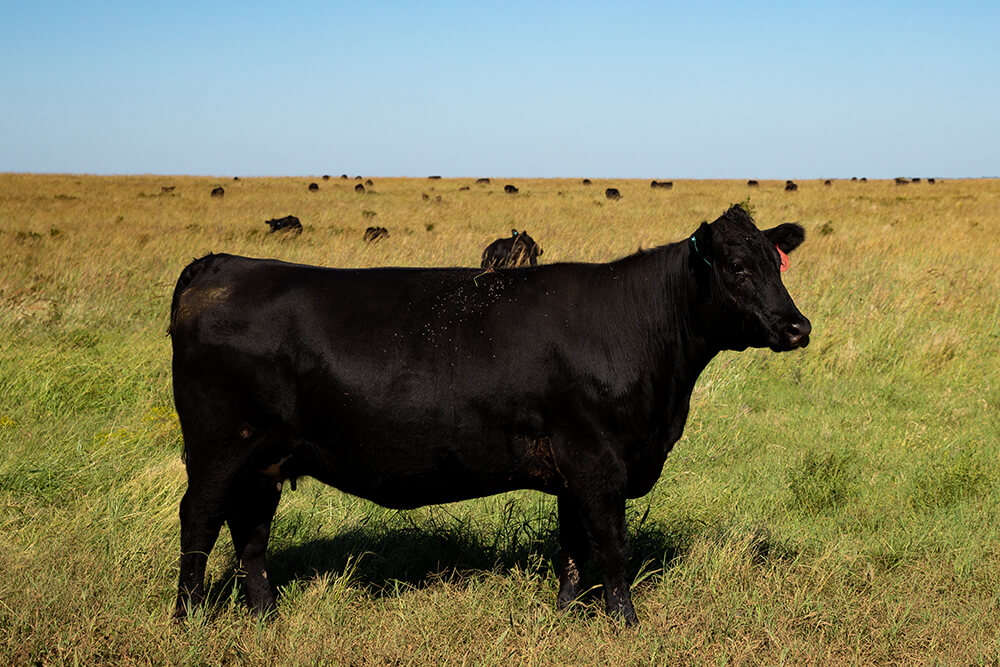
2. She is moderate in size.
The universal limiting factor for a ranch’s livestock carrying capacity is the amount of forage that can be produced. However, by selecting for smaller-framed cattle, producers can run more cows that each need less maintenance while weaning more pounds of calves per acre.
A mature cow will consume about 2.6-3% of her body weight daily if forage is readily available. Therefore, a smaller, lighter-weight mature cow will require fewer nutrients to maintain her body condition score. That’s why cows with a frame score of 3 to 4 (1,000 to 1,200 pounds) are considered more desirable in a regenerative system than those with frame scores of 6 or greater.
With a more moderate-framed cow eating less forage daily than a large-framed cow, you can stock more moderate-framed cows on the same number of acres, calve more offspring and should be able to wean more total pounds of calves per acre. Going too small can have consequences, such as calves not meeting industry carcass-size expectations or mismatched sire selection causing calving issues.
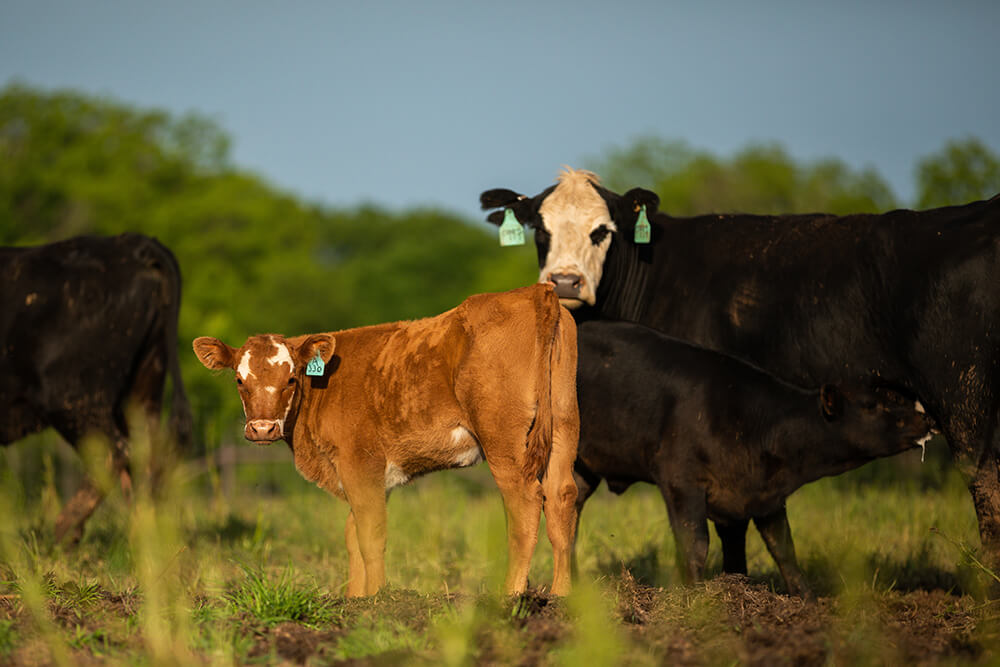
3. She is efficient.
For a cow to be considered efficient, she should be efficient in the areas of forage intake, production and reproduction longevity. Generally, a crossbred cow that is small- or moderate-framed and possesses average milking ability is more likely to be more efficient than a larger-framed cow.
As a smaller or moderately framed cow, she is reproductively efficient. Since she usually will consume less forage than a larger cow, she enables a ranch to run more smaller-framed cows on the same grazeable acres, with each cow potentially producing a weaned calf. That adds up to more calves to market and more pounds weaned per acre.
A smaller-framed cow is more likely to wean calves at a greater proportion of her body weight than average-sized cows under similar management (i.e., a 1,100-pound cow is more likely to wean >50% of her body weight than a 1,300-pound cow), which again translates to more pounds weaned per acre.
Remember that pounds of calf produced per grazing acre and net margin per acre for the cow-calf enterprise are highly correlated only if supplemental and substitute feed costs are well-managed. So don’t feed your way to greater weaning weights.
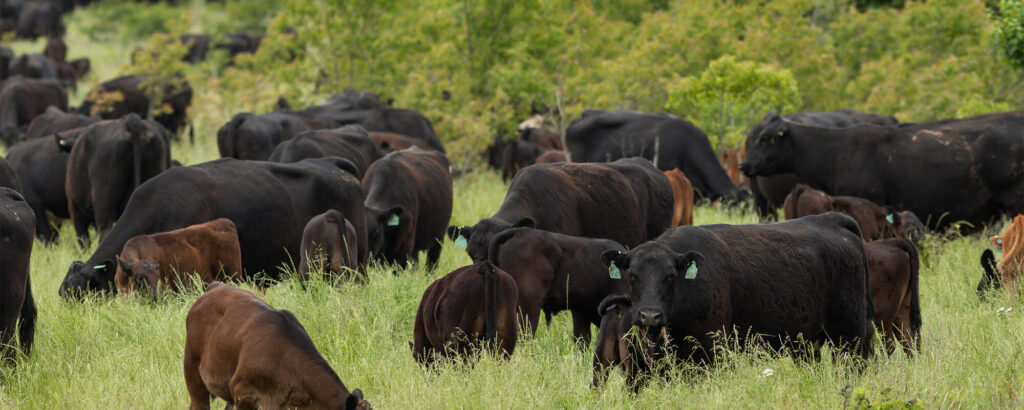
4. She rebreeds annually and in the desired season.
Like all cows in a managed ranching system, regeneratively managed cows need to breed every year in a defined calving season, or they are not reproductively efficient and should be removed from the herd. Preferably, the cow would breed during the first month of the breeding season, leading to a calf born early in the calving season. This gives her ample time to rebreed the following season and increases her longevity and productive life in the herd, in addition to weaning a heavier calf.
Although not required, it’s best to time the breeding season of a regeneratively managed cow to be during the peak season of the ranch’s forage supply. This means breeding later in the summer in most regions, which may create concerns such as having bulls working during summer heat. However, in regenerative management operations, the bulls must fit the system as well; if they won’t work during the summer, get bulls that will.
Help the cow and reduce your feed expenses by calving and breeding during your peak forage production season. Weaning weights may be lighter, but gross margin is usually much greater.
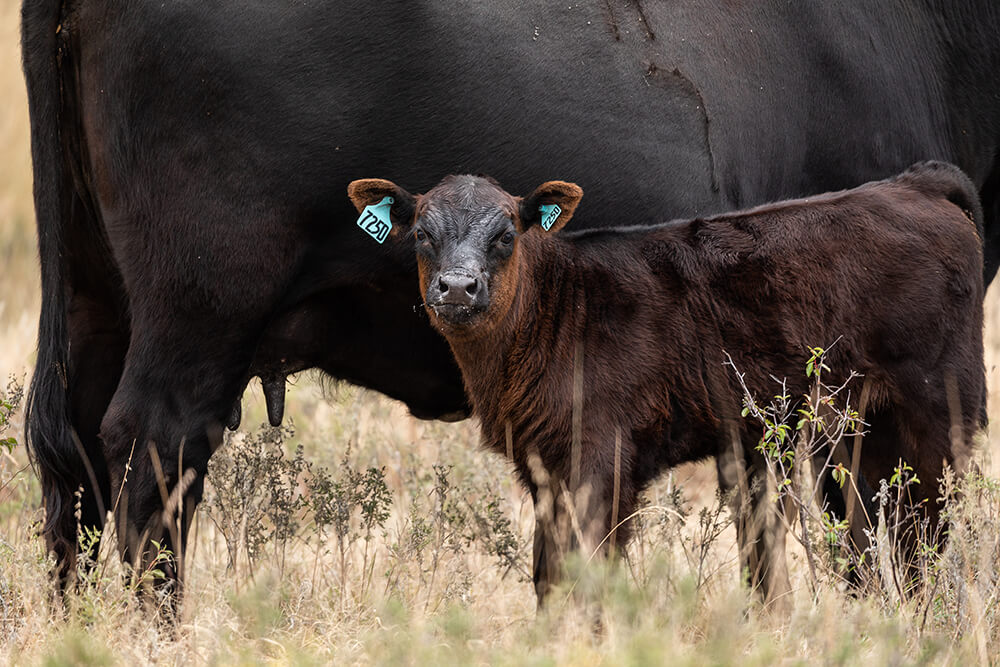
5. She has moderate milking ability.
Moderation or optimization should be the goal for the milking ability of a regeneratively managed cow so your pastures can meet the nutrient demands for lactation. Heavy-milking cows are higher-maintenance cows and tend to have difficulty recovering their body condition score after calving, which can lead to late rebreeding or staying open. So, know the milking ability and expected progeny difference averages for the breed(s) and lines you are using, and select genetics to avoid high milking EPDs when possible.
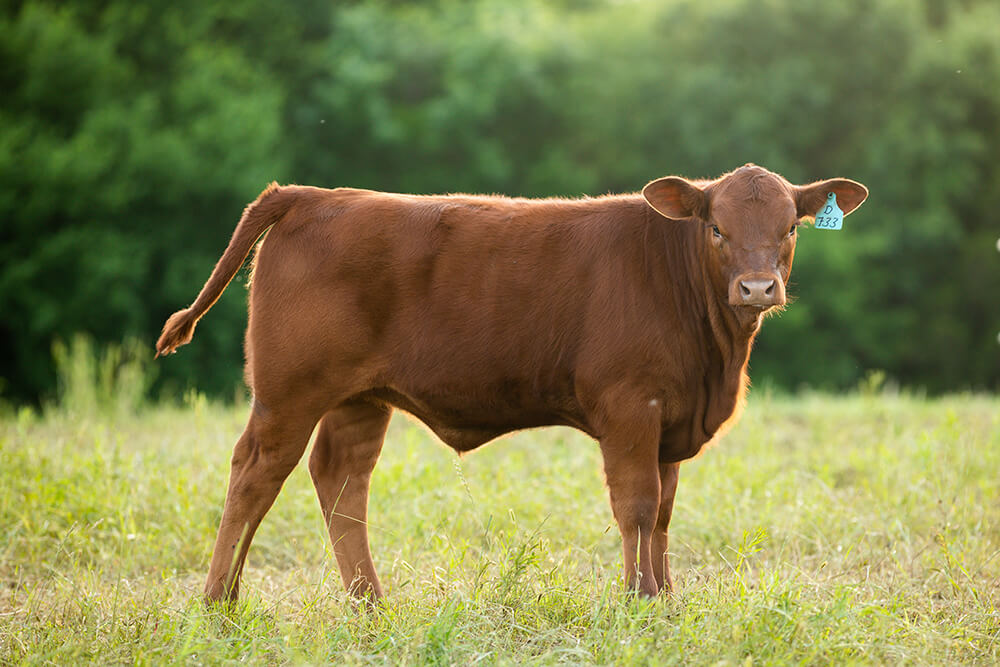
6. Optimally, she will be crossbred to utilize heterosis.
Crossbred cows, in general, can have advantages over straightbred cows in regenerative operations. Most of these advantages are due to the hybrid vigor or heterosis the crossbred cow will exhibit. Examples of advantages include greater reproductive efficiency, greater feed efficiency (and hustling ability), heavier calves, improved health or immunity and increased longevity. Some of these benefits are passed on to the calf, including increased weaning weight, improved feed efficiency, improved rate of gain and improved health/immunity, all of which will enhance the economic efficiency of the cow-calf enterprise.
For optimal results, crossbreeding should be intentional, with consideration given to breed complementarity, maternal heterosis and milking ability (moderate milk EPDs, if possible), especially if raising your own females. Consideration should also be given to individual heterosis of calves on calving ease/birth weights followed by growth and performance traits (i.e., weights tend to increase and performance improves with crossbreeding).
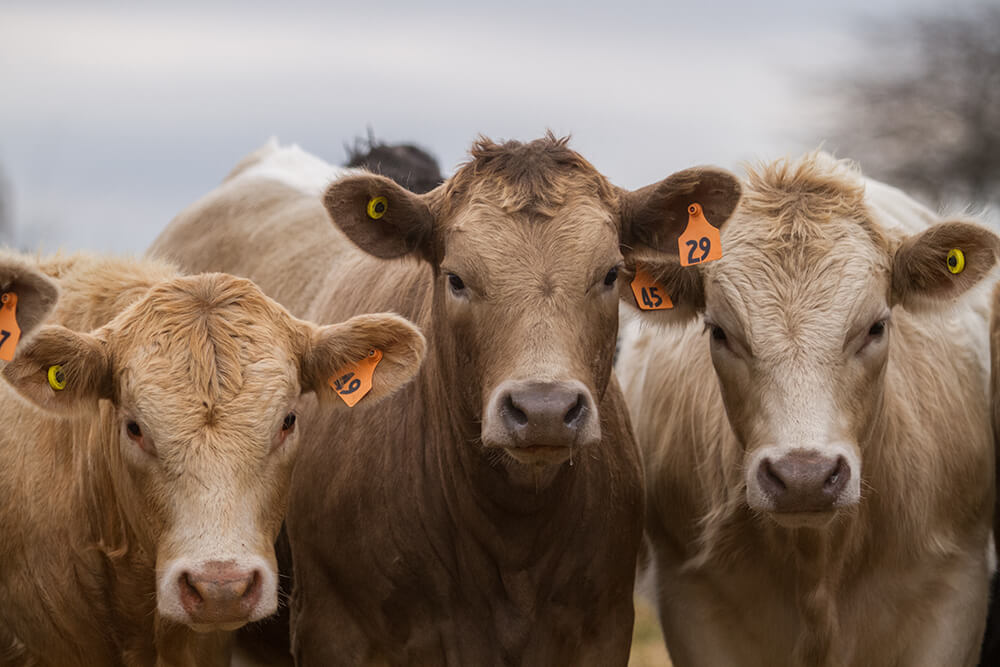
Setting and meeting your ranching goals
Perhaps not all ranchers want to manage their cows in a regenerative manner, but we hope most will aspire to rebuild or rejuvenate the grazing lands where their cows spend their productive life.
For those ranchers who are intentional land stewards and cattle producers, raising and selecting cows that fit the characteristics of a regeneratively managed cow is a smart goal. Aim for a cow that is well adapted to the environment and management system she is required to work within. Ideally, she is a cow that will get rebred early every year with minimal feeding, stay in the herd longer than expected, consume less forage than expected, and raise a healthier, bigger calf than the average cow under regenerative management. Remember, the term “regenerative” applies to the management of the grazing lands, not the cattle themselves. Regardless, a productive, efficient cow adapted to a regeneratively managed ranch is what the industry needs, and as a regenerative producer, she is what you need to manage for.
Editor’s Note: This is part of a continuing series of articles about regenerative ranching from Noble Research Institute, long trusted by beef cattle producers for supporting the industry with research, education and consultation. Follow the series in future issues of Baldy Advantage and Hereford World, as well as in special “1881” podcasts, at Hereford.org. Additional regenerative resources and past articles in the series are also at Noble.org.
Comment
Leave a Reply
1 comment on: "Is There a Regenerative Cow?""
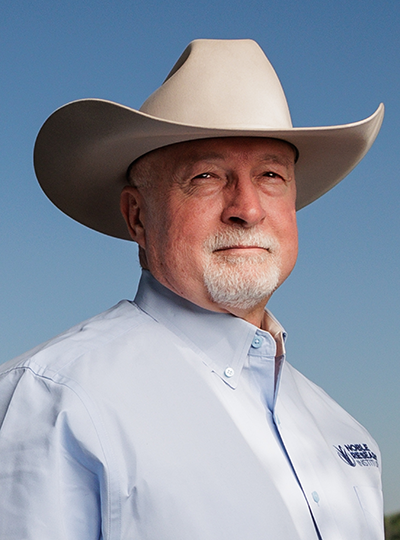
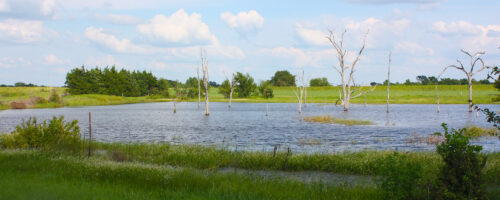

carter randolph
April 1, 2025All the traits mentioned are necessary but you forgot a few that are the difference between grass finished steak on the plate and grass finished beef — marbling, tenderness and flavor. Selling grass finished beef has been challenged by consumer reaction to quality – quality being perception based on grain finished beef. If grass finished is to reach the market penetration that will make it a success at a great price it will have to produce a great steak on the plate at 24 months. Genetics to reach marbling, tenderness and flavor profiles that compete with grain finished are a necessary trait for a regenerative cow. In the end, supply of anything only matters if demand pushes the price above the cost and making a better steak on the plate will drive regenerative beef demand. Just my 2 cents on what will make a great regenerative cattle.